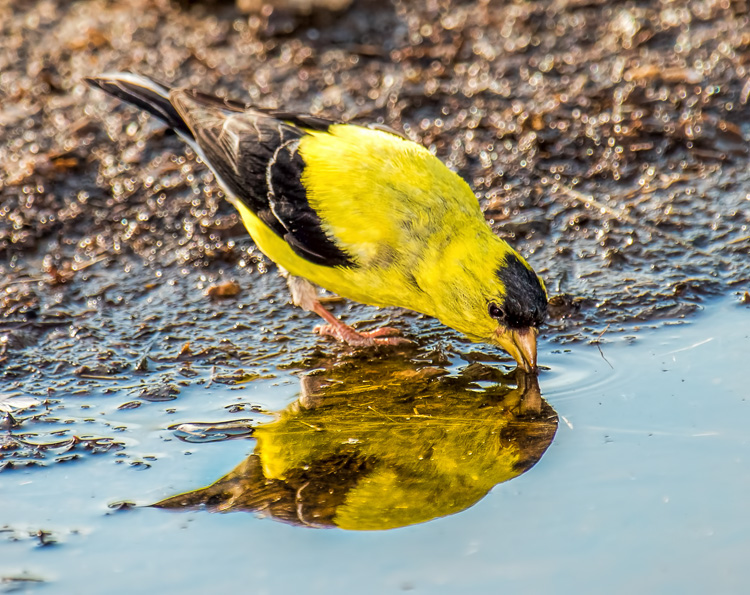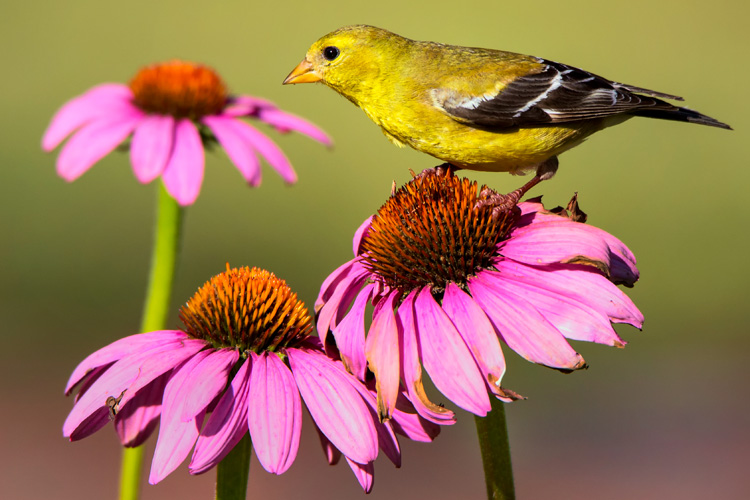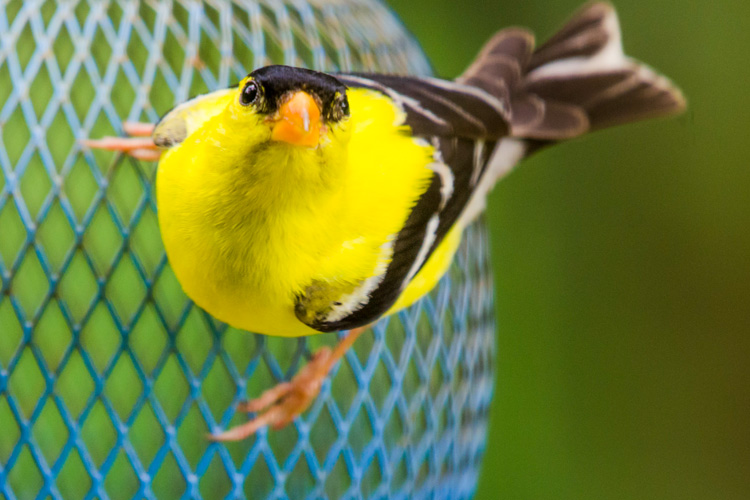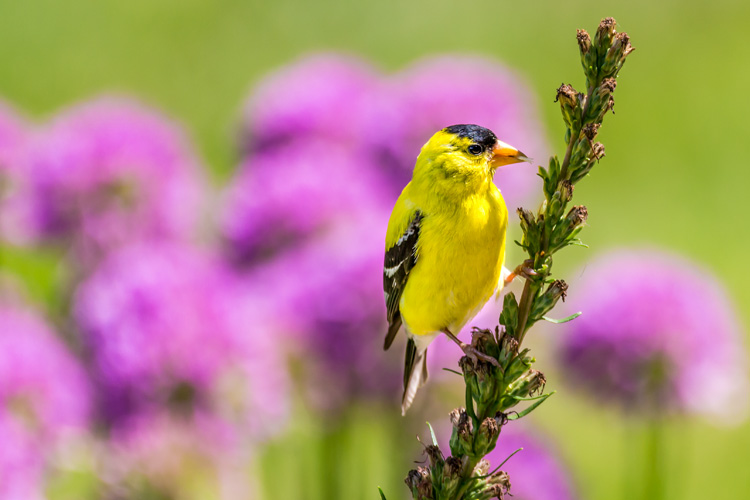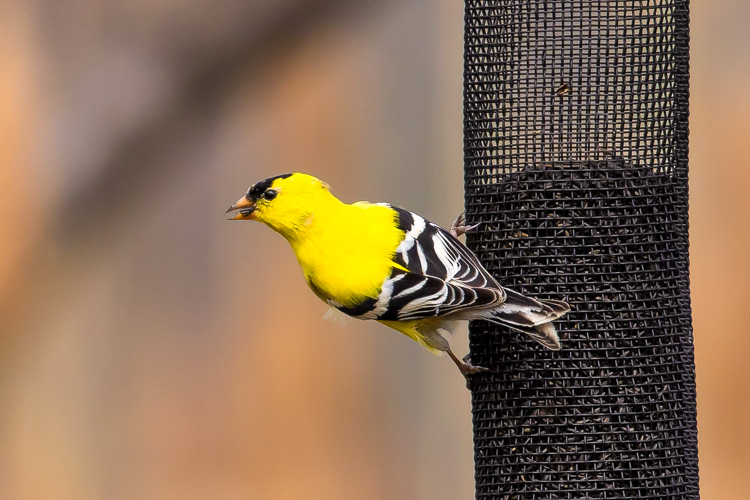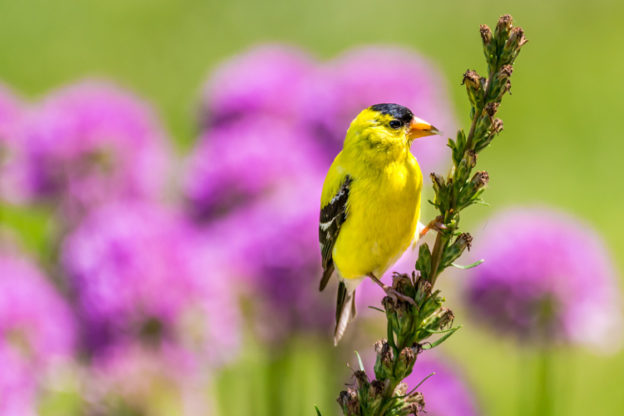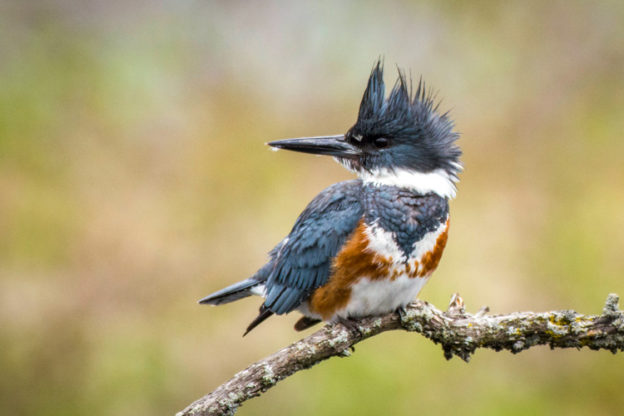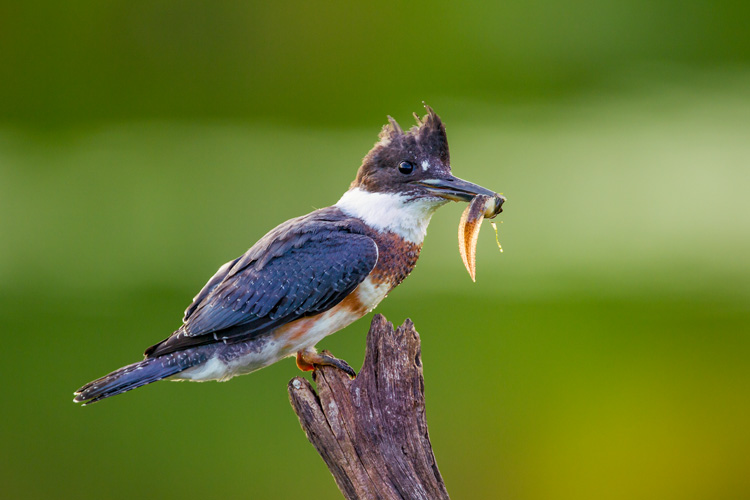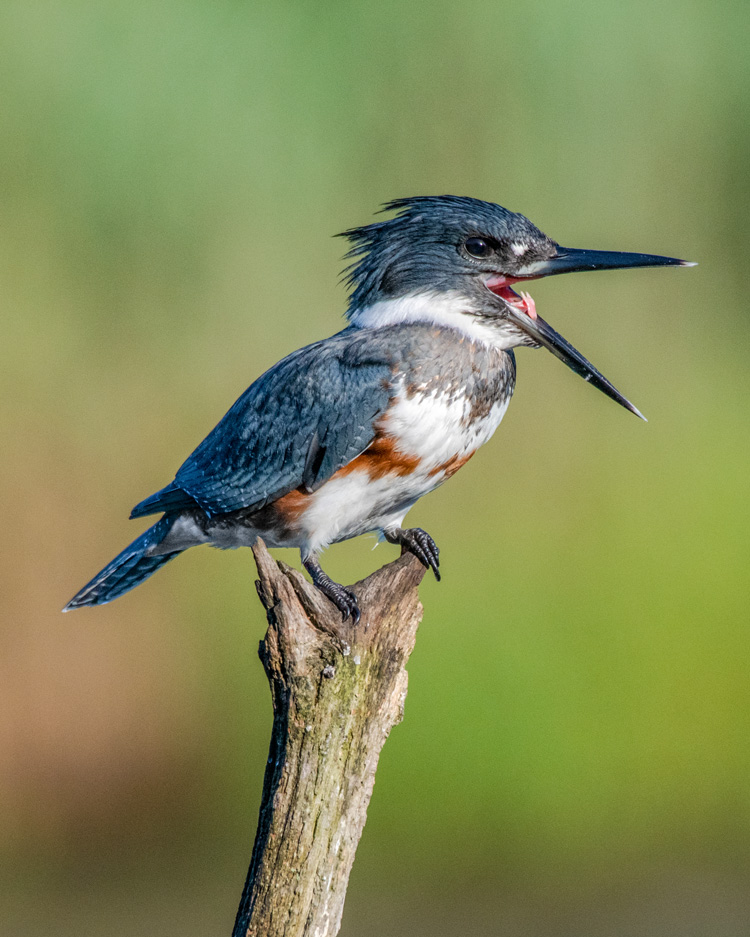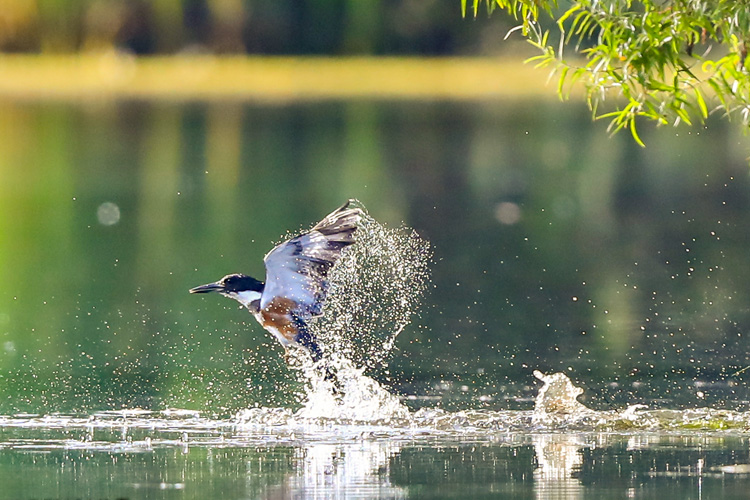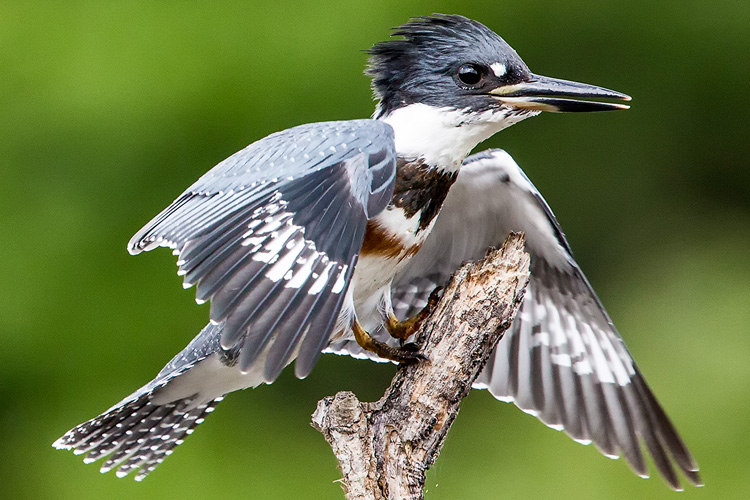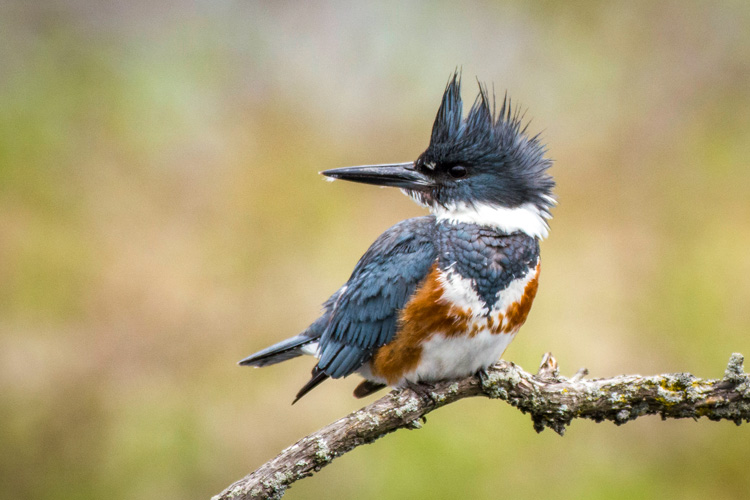Out of the corner of your eye, a sunny, cheerful flash of bright yellow alights upon your bird feeder and almost certainly means one thing: the American Goldfinch!
Almost exclusively seed-eaters, the so-called “wild canaries” of the Americas are late nesters relative to most of our breeding birds here in Massachusetts, giving them access to nutritious native thistle seeds to feed their young. Known for their energetic seed-harvesting acrobatics, look for them plucking thistle seeds this time of year and listen for their sweet, enthusiastic song, a long, fluctuating string of warbles and twitters. They are also known to make contact calls, often mid-flight, the most common of which bears the mnemonic phrase po-ta-to-chip.
Before you know it, the arrival of cooler weather will turn the vibrant yellow males’ plumage a drab brown until the arrival of spring and the return of the breeding season, so enjoy the cheery colors while they last, but the varied sounds and acrobatic antics of these beloved birds can be appreciated year-round in virtually every part of the state.
Here are five photos of fabulous goldfinches to brighten your day. We want to see your nature photos, too! Enter the Picture This: Your Great Outdoors photo contest by September 30
